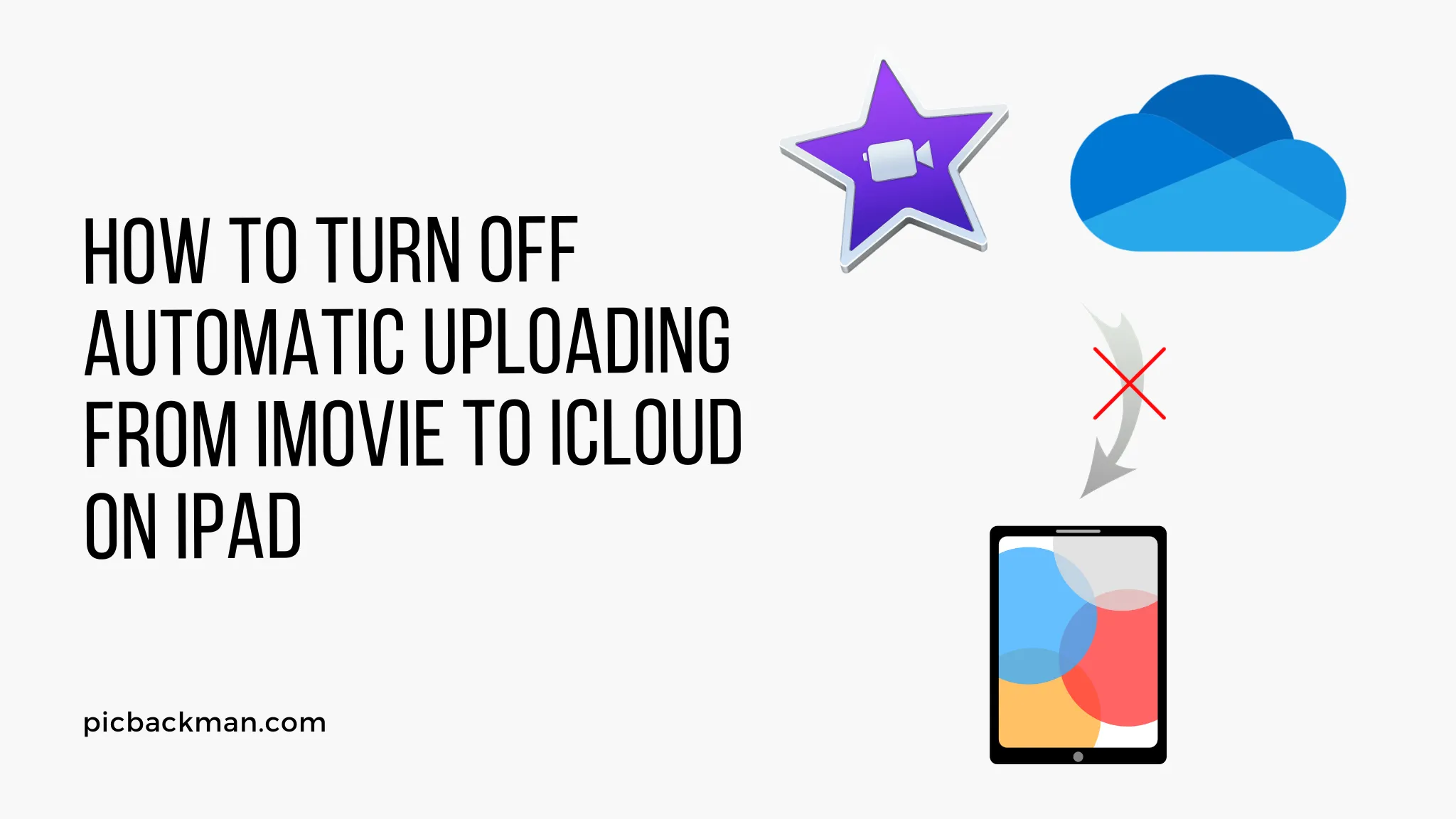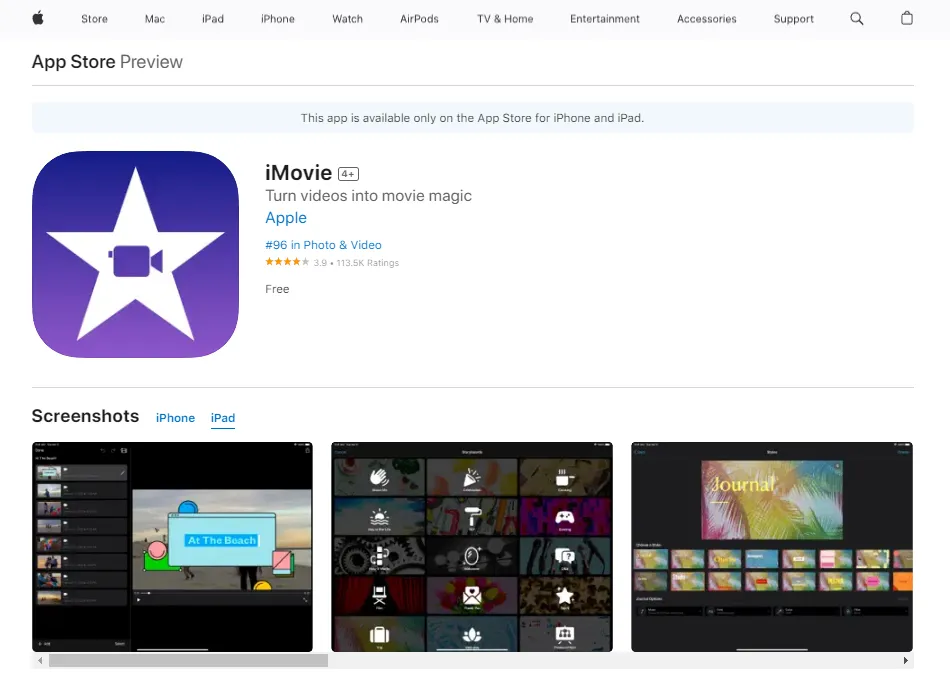
How to Turn OFF Automatic Uploading from iMovie to iCloud on iPad?


Introduction
iMovie is a great video editing app that comes pre-installed on iPads. It allows you to edit videos, add effects, transitions, titles, music and more. One useful feature of iMovie is that it can automatically upload your finished videos to iCloud for easy sharing and storage. However, some users may prefer to manually manage their iMovie videos and not have them automatically uploaded to iCloud.
Turning off the auto upload feature in iMovie only takes a few taps, but knowing where to find the right settings can be tricky. This article will provide a step-by-step guide on how to turn off automatic uploading from iMovie to iCloud on your iPad.
Prerequisites Before Getting Started
Before diving into the steps to turn off iMovie's auto-uploading, it helps to go over a few requirements and things to know beforehand:
- You need to have the latest version of iMovie installed on your iPad. Go to the App Store to check for and install updates if needed.
- Your iPad needs to be connected to the internet in order to access iCloud settings initially.
- You need to have an iCloud account set up on your iPad and be signed into it.
- Understand that turning off auto-uploading does NOT delete videos already uploaded to iCloud from iMovie. It only stops future automatic uploads.
- The iMovie app needs permission to access Photos and iCloud. Check settings if uploads are not working correctly.
- Your iPad should be running iOS/iPadOS 13 or later for full iMovie app functionality.
Accessing iMovie Settings on iPad
To access the main iMovie settings where the auto iCloud upload toggle is found, follow these simple steps:
- Open the iMovie app on your iPad.

- Tap on the Settings icon in the top left corner of the iMovie app screen. It looks like a gray gear icon.
- This will open up the iMovie settings menu. Look for and tap on the iCloud option about halfway down the settings menu.
- The iCloud settings screen displays options for auto uploading videos to iCloud and keeping iMovie projects synced across devices via iCloud. This is where you can disable auto uploading.
Turn Off Auto iCloud Upload in iMovie Settings
Now that you are in the correct iMovie iCloud settings area, turning off auto uploads is easy:
- Locate the Automatically upload videos option and toggle the switch to the OFF position if it is not already.
- The toggle switch should turn gray and display OFF when disabled.
- You can also toggle OFF the switch for storing unfinished projects in iCloud if desired.
- Once disabled, iMovie will no longer auto upload every completed video project to iCloud storage from that iPad.
- Tap the back arrow "<" in top left to go back and save changes.
That's all there is to it! iMovie's auto iCloud upload feature is now disabled on your iPad. All new video projects will remain locally on your device unless you manually choose to upload them to iCloud.
Checking Upload Status of Current Videos
Just because you disabled auto-uploading does NOT mean videos already uploaded to iCloud from that iPad will be removed or deleted:
- Previously auto-uploaded videos will still be viewable in the iCloud Photos app and iCloud storage associated with your Apple ID.
- To check videos uploaded from that iPad only: Open the Photos app >> Albums >> Videos >> look for an "iMovie" album.
- To delete previously uploaded videos: Open iCloud Photos app, tap "Select", select videos, tap delete.
- Turning OFF auto upload prevents this happening automatically for any new iMovie projects on that device going forward.
Managing iCloud Storage Space
With auto-uploading off, iCloud storage used by iMovie videos won't grow as quickly. However, existing iMovie videos can still take up significant space:
- Check iCloud storage usage in iPad Settings > [Your Name] > iCloud > Manage Storage > iCloud Photos.
- Or on a Mac: Apple Menu > About this Mac > Storage > Manage > Videos.
- Optionally delete older iMovie videos manually from iCloud as needed to free up space.
- Can also disable/delete unfinished project backups from iCloud to clear space.
- Downloading iMovie videos to the iPad Photos app frees up equivalent iCloud space.
So while turning off auto-uploads prevents future large uploads, proactively managing currently uploaded iMovie videos is key to better iCloud storage use.
Uploading iMovie Videos Manually
With auto-upload disabled, how do you get iMovie projects into iCloud/iCloud Photos for sharing and safekeeping? Manual exporting offers more control:
- When an iMovie project is ready to upload, tap the Share icon in top right corner.
- Choose either "iCloud Photos" or "Save Video" to Camera Roll.
- Saving to Camera Roll lets you manually upload later from the Photos app using the Share menu.
- Can select multiple finished videos in iMovie for batch exporting to iCloud Photos.
- Use Share menu to also export videos to YouTube, Facebook, AirDrop, etc.
Manual uploading gives you more discretion about which iMovie creations get shared to iCloud storage rather than blindly auto-uploading everything.
Restoring Auto iCloud Upload Functionality
If you change your mind later and want to turn iMovie auto-uploading back on:
- Open iMovie Settings > iCloud settings.
- Toggle the "Automatically upload videos" switch to the ON position.
- The auto upload feature will immediately be re-enabled once you save changes.
- All new completed video projects will once again be automatically uploaded going forward.
- Can also optionally toggle ON the iCloud project backups switch.
So you can always return auto-uploading if you decide you want iMovie videos automatically saved to iCloud again down the road. Remember to monitor your storage usage though!
Quick Tip to ensure your videos never go missing
Videos are precious memories and all of us never want to ever lose them to hard disk crashes or missing drives. PicBackMan is the easiest and simplest way to keep your videos safely backed up in one or more online accounts.
Simply Download PicBackMan (it's free!), register your account, connect to your online store and tell PicBackMan where your videos are - PicBackMan does the rest, automatically. It bulk uploads all videos and keeps looking for new ones and uploads those too. You don't have to ever touch it.
Frequently Asked Questions
Here are answers to some common questions about managing iMovie's auto iCloud uploads on an iPad:
Does turning off auto-upload delete my iMovie videos from iCloud?
No, disabling auto upload does not delete or remove videos already saved in iCloud storage from past uploads. Previously auto-uploaded videos will still be accessible in the iCloud Photos app and iMovie app.
Do I lose iMovie projects stored in iCloud if I turn off auto-upload?
No, unfinished project backups saved to iCloud will remain available even if you disable the auto backup feature. You can delete those backups manually in iCloud settings if desired.
How do I get new iMovie videos into iCloud after disabling auto upload?
You will need to manually choose the "Share to iCloud Photos" or "Save Video to Camera Roll" options from within iMovie after disabling auto-uploads. This gives you more control over what gets uploaded.
Will turning off uploads stop my iMovie from working properly?
No, disabling auto-upload will not affect general usage of iMovie for creating and editing projects locally on your iPad. Only the automatic uploading of final videos to iCloud will be stopped.
Can I re-enable auto iCloud uploads again later if disabled?
Yes, you can always toggle the auto upload setting back ON in iMovie's iCloud settings. This will once again enable automated saving of new iMovie videos to iCloud when completed.
What happens to my iCloud storage after disabling auto uploads?
Your current iCloud storage usage will remain unchanged. However, additional space will not be taken up automatically going forward as new videos finish. You'll need to manage old videos manually.
Conclusion
In summary, here is an outline of the key points covered in this guide on how to turn off automatic iCloud video uploads in iMovie for iPad:
- Access iMovie Settings > iCloud to find auto upload toggle.
- Turn OFF "Automatically upload videos" switch to disable auto uploads.
- Confirm auto upload is disabled by toggle showing as grey/OFF.
- Existing videos in iCloud remain accessible.
- Manually export future videos to iCloud/Camera Roll instead.
- Monitor and optimize current iCloud storage usage as needed.
- Auto uploading can be re-enabled anytime if desired.
Disabling iMovie's auto iCloud feature on your iPad gives you more control over managing videos, iCloud storage, and sharing. Just be sure to manually back up important videos and projects as needed. Follow the steps outlined in this guide proper for settings access and to smoothly turn off automatic iCloud uploads from iMovie on your iPad.
Backup & Transfer your Photos in Minutes
Automate backup & migration of your photos & videos with support for all top services.
Trusted by users in 125+ countries.









